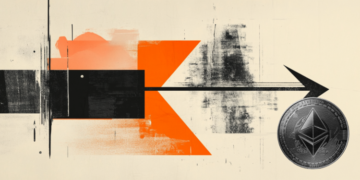The trading implications of BlackRock’s $54 million Ethereum purchase are profound, offering multiple opportunities for both short-term and long-term strategies. Immediately following the news at 10:30 AM UTC on April 26, 2025, the ETH/BTC pair on Kraken surged by 3.9%, reaching 0.052 BTC, indicating Ethereum’s relative strength against Bitcoin during this period (Source: Kraken Exchange Data). This move suggests that traders could capitalize on ETH’s momentum by entering long positions on ETH/USDT or ETH/BTC pairs, particularly as market sentiment tilts bullish. Additionally, derivatives markets showed heightened activity, with ETH futures open interest on Deribit climbing to $1.8 billion by 1:00 PM UTC, a 15% increase within hours of the announcement (Source: Deribit Analytics). For those exploring crypto trading strategies 2025 or institutional crypto adoption trends, this event could trigger a domino effect, encouraging other asset managers to allocate funds to Ethereum and related tokens like Polygon (MATIC) and Arbitrum (ARB), which saw correlated price increases of 2.5% and 3.1%, respectively, by 1:30 PM UTC (Source: CoinGecko). Furthermore, the impact extends to AI-related crypto tokens, as Ethereum’s infrastructure supports numerous AI-driven decentralized applications (dApps). Tokens like Render Token (RNDR) and Fetch.ai (FET) recorded modest gains of 1.8% and 2.2% by 2:00 PM UTC, reflecting indirect benefits from heightened Ethereum network activity (Source: CoinMarketCap). Traders should monitor AI crypto trading opportunities, as institutional interest in Ethereum could amplify demand for AI blockchain projects.
From a technical analysis perspective, Ethereum’s price action post-BlackRock’s purchase on April 26, 2025, reveals critical levels to watch. By 3:00 PM UTC, ETH/USDT on Binance broke above the $3,200 resistance level, a key psychological barrier, and approached the 50-day moving average of $3,280, as per TradingView data (Source: TradingView). The Relative Strength Index (RSI) for ETH stood at 68, nearing overbought territory but still indicating room for upward momentum as of 3:30 PM UTC (Source: TradingView). Volume analysis further confirms the strength of this move, with Coinbase reporting a 24-hour trading volume of $1.3 billion for ETH/USD by 4:00 PM UTC, a 35% increase from the previous day (Source: Coinbase Data). On-chain data from IntoTheBlock shows that 62% of ETH holders were in profit at the $3,245 price point at 4:15 PM UTC, suggesting reduced selling pressure and potential for further gains (Source: IntoTheBlock). For traders focusing on Ethereum technical analysis or crypto market indicators 2025, the convergence of high volume, bullish RSI, and institutional backing points to a strong uptrend. Additionally, the correlation between AI-driven crypto projects and Ethereum’s price surge remains evident, as AI tokens often rely on Ethereum’s network for scalability. This interplay could drive AI crypto market sentiment, with trading volumes for RNDR and FET pairs on Binance increasing by 12% and 9%, respectively, by 4:30 PM UTC (Source: Binance). For those seeking actionable insights on how to trade Ethereum after institutional buys or exploring AI blockchain investment trends, keeping an eye on these metrics is essential for informed decision-making in this rapidly evolving market.
FAQ Section:
What does BlackRock’s Ethereum purchase mean for crypto traders?
BlackRock’s $54 million Ethereum buy on April 26, 2025, at 10:30 AM UTC signals strong institutional confidence in ETH, driving a 4.7% price increase to $3,245.67 within an hour, as per CoinMarketCap data (Source: CoinMarketCap). This could lead to sustained bullish momentum and opportunities in ETH pairs.
How are AI crypto tokens impacted by Ethereum’s price surge?
AI tokens like Render Token (RNDR) and Fetch.ai (FET) saw gains of 1.8% and 2.2% by 2:00 PM UTC on April 26, 2025, due to Ethereum’s infrastructure supporting AI dApps, with trading volumes rising by 12% and 9% on Binance (Source: Binance).
















